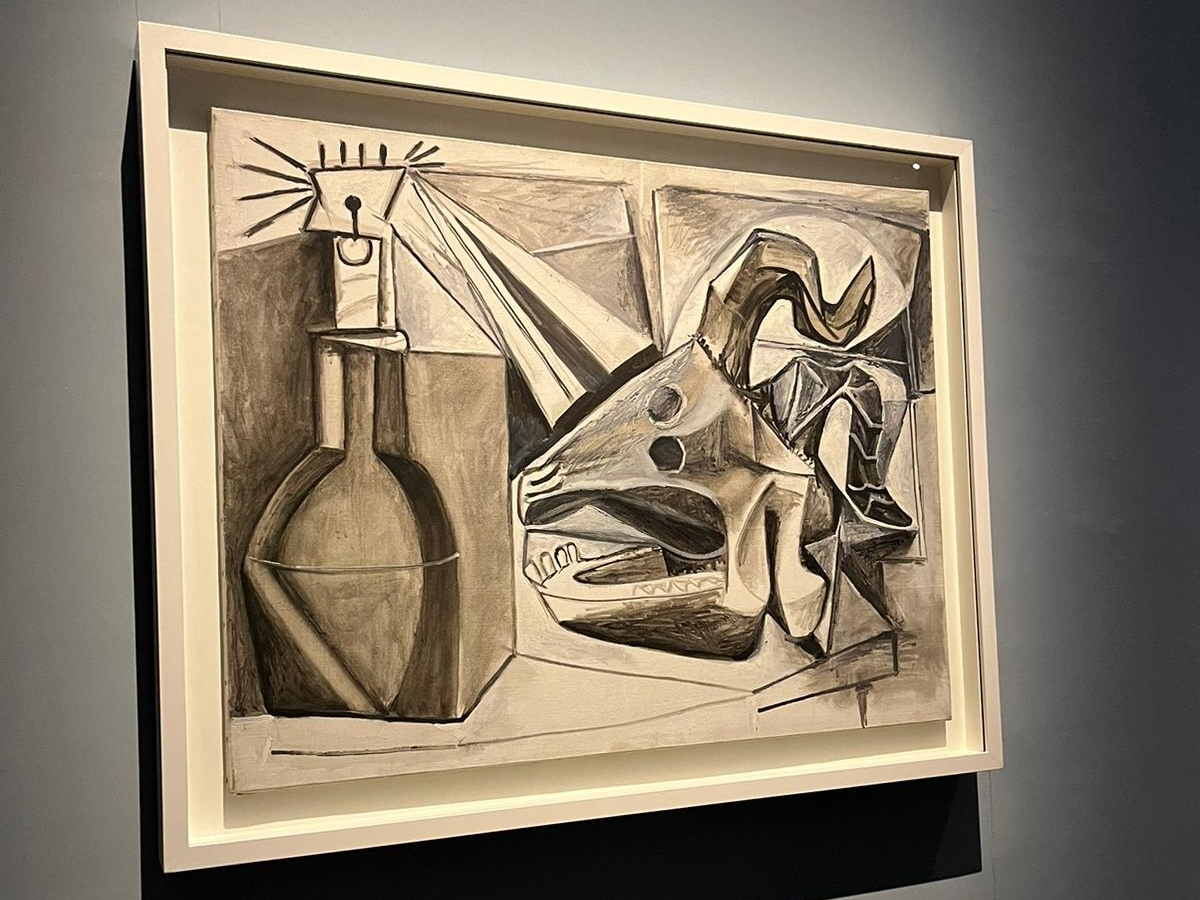Milan, the city that never rests, offers a one-of-a-kind event this november. With the exhibition “Lo Straniero” held at Palazzo Reale, visitors are invited to step in the revolutionary world of Pablo Picasso, and experience his masterpieces that defined many generations.
Who was Pablo Picasso?
Born in 1881 in Malaga, Spain, Pablo Picasso was raised in a family with artistic roots. Mainly influenced by his father, Don José Ruiz Blasco, who was an art teacher and a painter, he got his first insights about art and creativity. Picasso has shown interest and extraordinary talent in art at a very young age, and since then started being passionate about it.
Growing up and stepping into adulthood has been an important stage in life for Pablo Picasso. Moving abroad at an age of 19 without speaking French framed many of the events in his life and influenced him as a person. As the headline of the article says, the artist can be called “Lo straniero” which translates as “The foreigner” which perfectly aligns with and describes his life story.
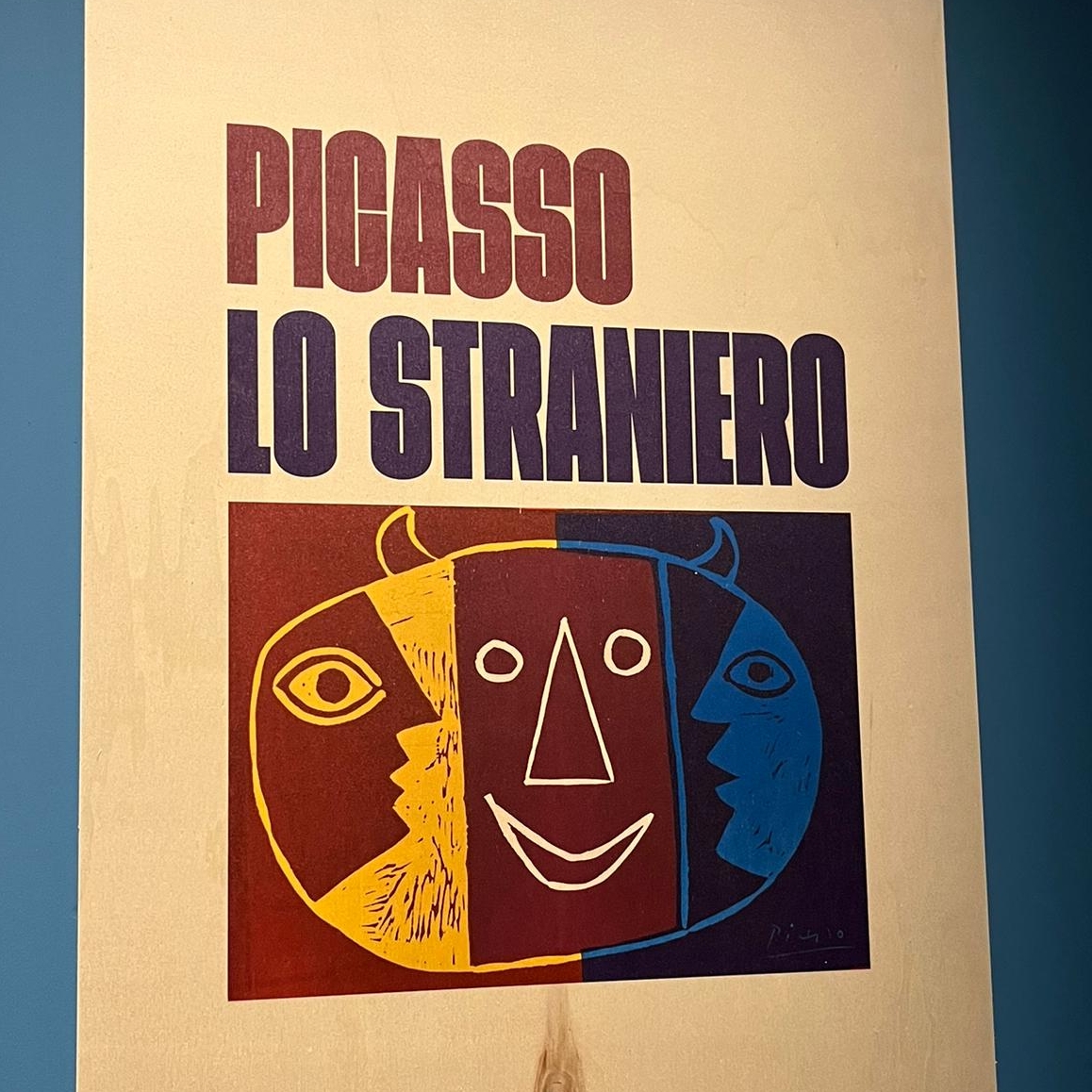
Pablo Picasso’s “Lo straniero” exhibition in Milano
From september 20, 2024 Palazzo Reale in Milan gave a great opportunity for art lovers to explore the world of Picasso in the exhibition “Picasso Lo Straniero”. One might think that everything has been already said about the famous spanish artist, however, the location cracks open a box full of documents, photographs, letters, videos and researchers in the archives. Pablo Picasso, being a very extraordinary persona, can attract audiences by his art as well as by his life story which addresses many of the ongoing situations relevant nowadays. Make sure to not miss out on such an opportunity until 2nd of February, 2025.
How is the exhibition organised?
The organization of the exhibition deserves a separate kind of attention, due to its creativeness and ability to keep the audience engaged. Starting with the general overview and representation of some of the artist’s works and videos from the archives, the audience is welcomed to learn about the start of his career. Moving further, visitors are exposed to his personal diaries, archives of the French police, as well as statues and paintings. By smoothly moving from one time period to another, the exhibition allows us to learn everything about Pablo’s lifespan up until his death in 1973 at the age of 91.
Picasso’s fusion of abstract & emotion
This masterpiece delivers an unmatched blend between abstract art & sentimental value. It stands as a testament to Pablo Picasso’s mastered skill of implementing Cubism in a fascinating way which cannot keep one’s eye from wandering away. The center of the attention is an enigmatic woman, creatively illustrated by the wild clash of the vivid shapes with the complementary colors. Though, her patterned hat makes a bold statement on its own, as it draws the focus completely on its shining vibrancy. While in contrast, the fragmented pieces along with the angular lines can hint at uncovered deeper feelings.
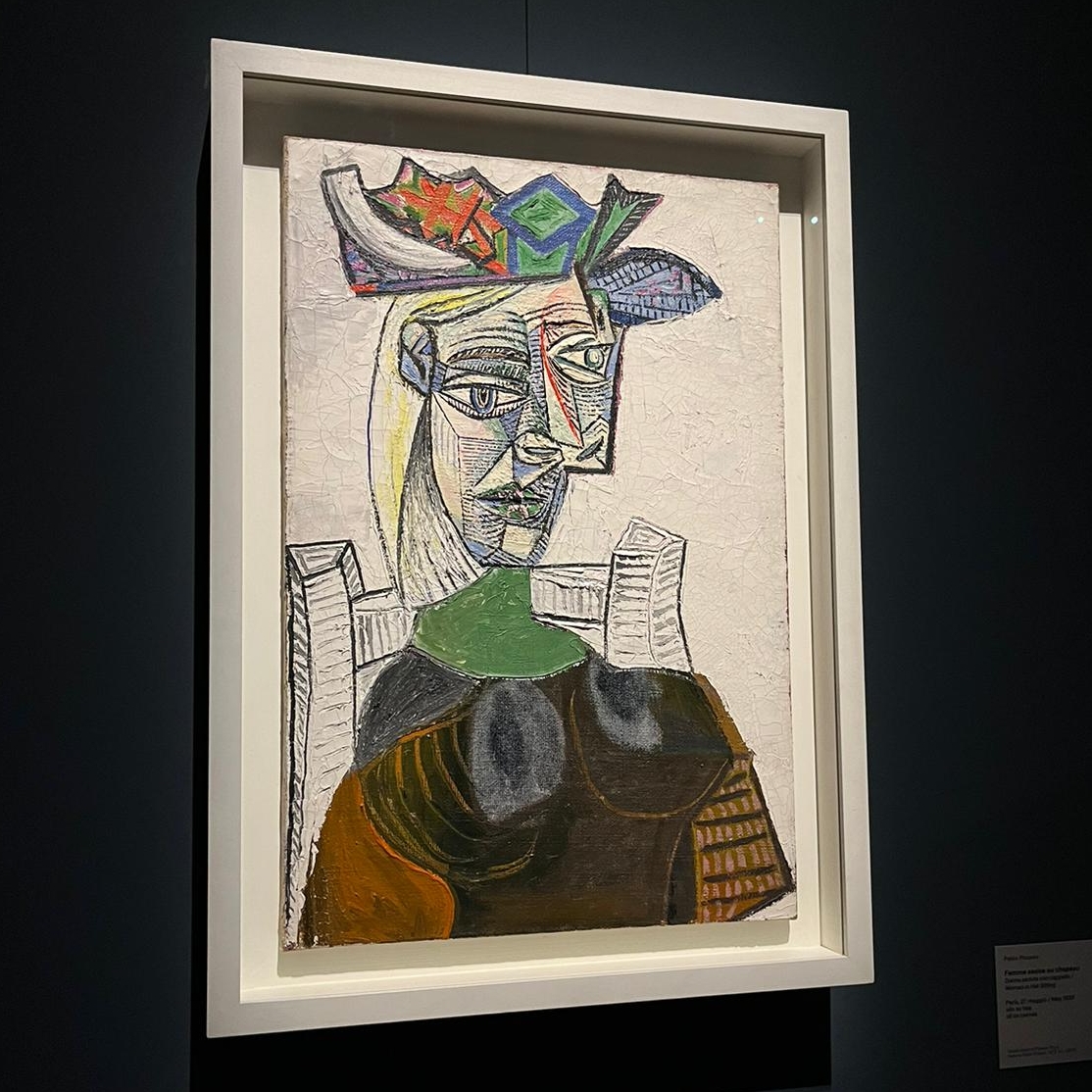
Sensibility in minimalism
The stillness of human nature can be portrayed in a plethora of artistic ways. Yet, Pablo Picasso chose a rather inquisitive approach. Through the illusion of fluidity, created by the effortless lines, he fuses together physicality with sensibility. It’s all in the simple, minimal yet slightly passionate strokes, of the artist’s dexterity. Those not only showcase a depiction of the body per se, but intangible phenomenons such as moods or emotions. The painting reaches its peak completion with the muted color palette and its subtle warm tones, suggesting an enhanced tenderness and vulnerability – often depicted in Picasso’s works.
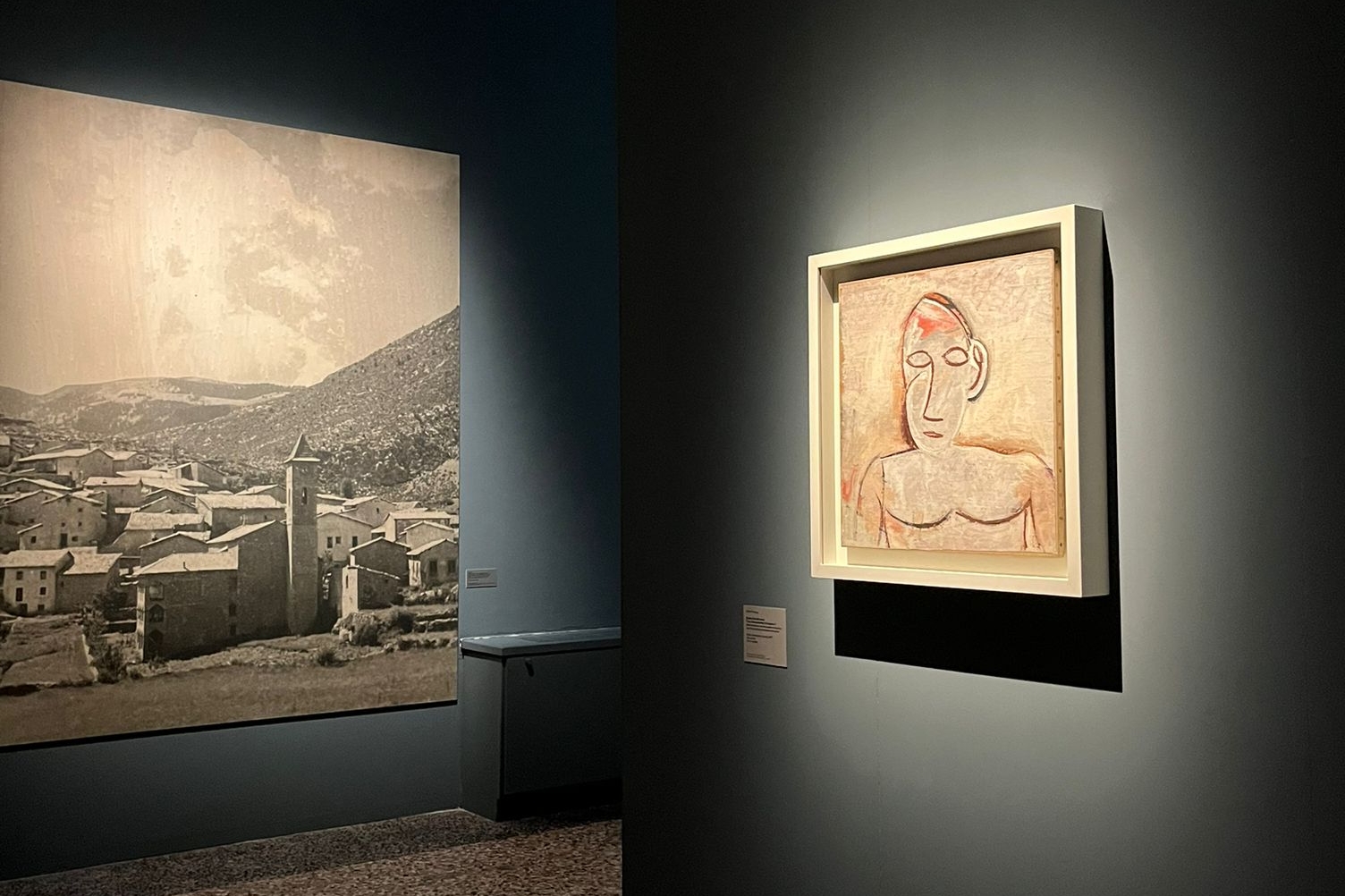
The tenderness of maternal bond
A painting which tugs at one’s heartstrings, highlighting the depths a maternal bond can reach. Red’s frequently associated for good measure with intensity, and for Picasso’s masterpiece is no different. Its evocation of fragility based on pure love harmonizes with the blue & brown clothes. Which on their own the two hues produce a feeling of tranquility. Simplicity is stripped away from the shapes and proportions. Instead it’s inventively applied to the facial features, which in return give their original distortion to the outlines. While the green background adds a natural yet soft touch to the whole painting.
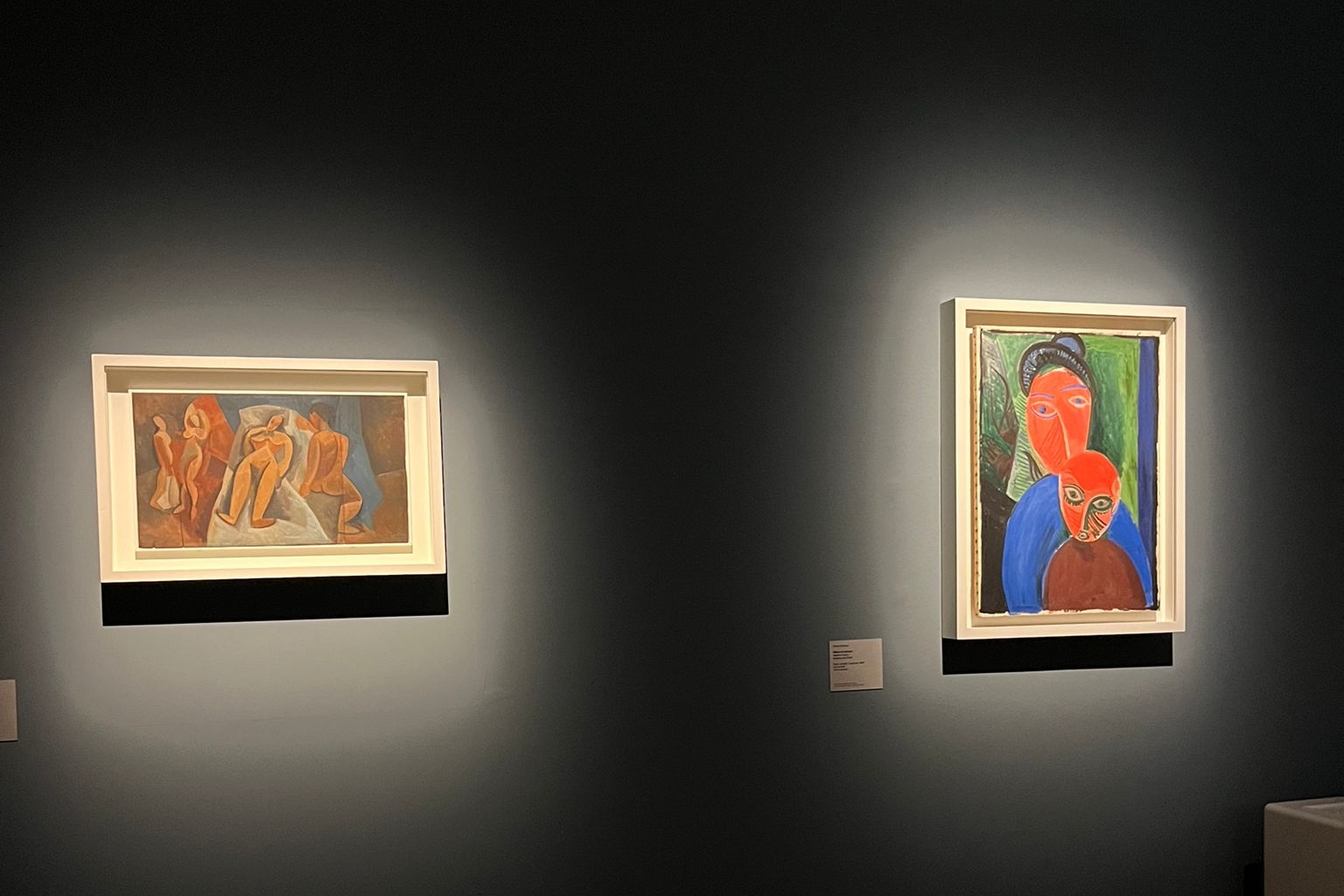
Raw power through simplified forms
This artwork presents a skeletal form of a bull, exuding an intimidating presence, at first glance. However, Pablo Picasso’s use of sharp outlines and simplified details suggests the idea that there’s more to raw forces of natures than meets the eye. This element together with the light and the shadow’s interactivity, acts as a testament to this deeper complexity.
“With his example and with his work, Picasso concretely demonstrated that nationality is not the place in which, completely by chance, we were born, but the place in which we were created, and it can well be said that the birthplace of Picasso is his work.”
Domenico Piraina, director of the Palazzo Reale of Milan.
